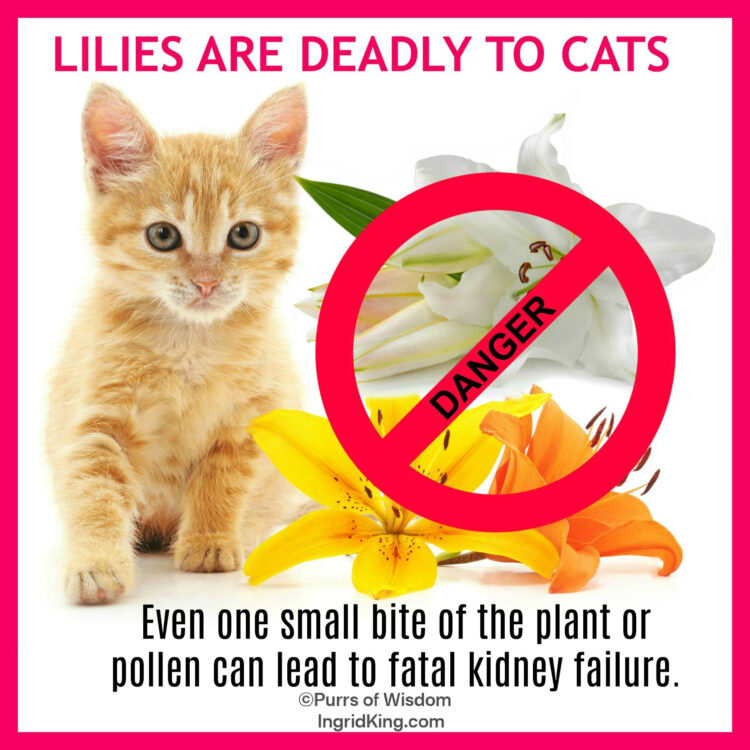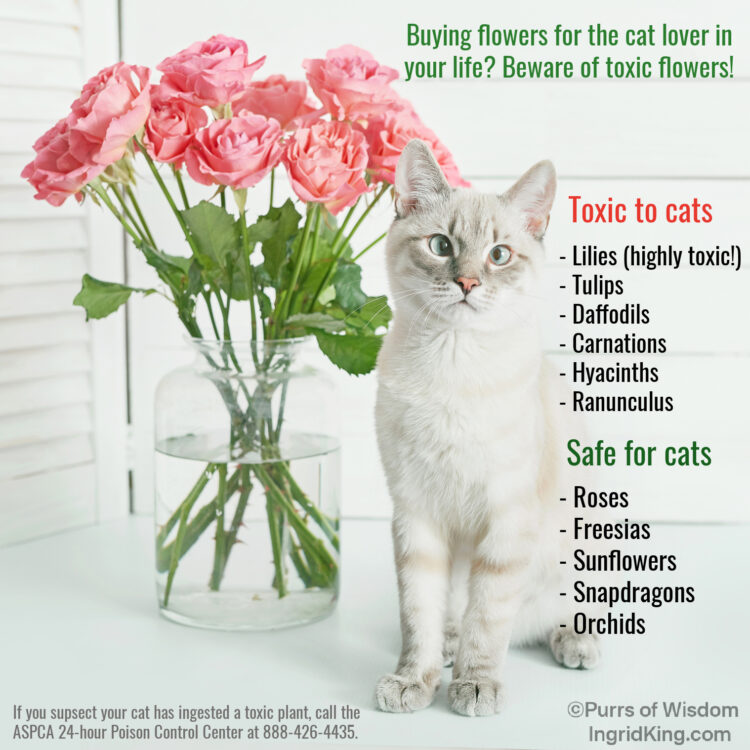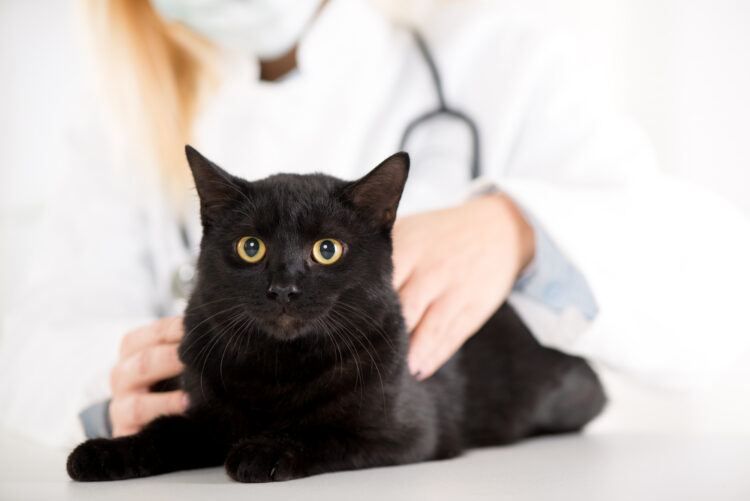
Easter is early this year, and already, Easter lilies are popping up at florists. And every year, cats needlessly die because far too few cat parents are aware that these flowers are highly toxic to cats. Just one small bite of a flower, leaf, stem or even just the pollen of this plant can lead to fatal kidney failure if not treated within 12 to 24 hours of ingestion.
What is lily toxicity?
All members of the lily family produce a chemical that is present in all parts of the plant and damages feline kidneys. Easter lilies (Lilium longiflorum), Stargazer lilies (Lilium ‘ Stargazer’ hybrid), and Asiatic lilies (Lilium asiaticum) are the most hazardous, but daylilies are also toxic and can also cause kidney failure. Other types of lilies such as calla lilies and peace lilies do not cause kidney failure, but can still be harmful. Lily of the valley can cause heart problems when ingested, including irregular heartbeat and low blood pressure, which can lead to seizures or coma.
Not all cats appear to be equally susceptible to lily toxicity and the severity of kidney failure can vary, but many affected cats never recover kidney function even with aggressive fluid therapy and either die or are euthanized within days of becoming ill.
If you even suspect your cat may have ingested any part of a lily, seek veterinary help immediately.
Symptoms of lily toxicity
Symptoms usually develop 6-12 hours after ingestion, and can include:
- vomiting
- lethargy
- lack of appetite.
Within 24-72 hours, signs of kidney failure will develop:
- increased thirst
- increased urination, followed by decreased and eventually no urination
- dehydration
- death
If you see any of these symptoms, and if there is even a small chance that your cat may have ingested parts of a lily, get your get to your vet or the nearest emergency veterinary clinic.
How is lily toxicity diagnosed?
If possible, bring the plant, or a picture of the plant, to the veterinary clinic with you to help with diagnosis. Your vet will perform blood and urinary testing. Urine analysis will show epitheial casts (indicators of kidney disease) in as few as 12 hours after ingestion. Increased BUN, creatinine and potassium levels in the blood will be seen 18 to 24 hours after ingestion.
Treatment of lily toxicity – time is of the essence
If treatment is initiated within 6 hours of ingestion, chances are good that the cat will survive. After 18-24 hours, the prognosis, even with treatment, is poor.
If your cat has ingested part of a lily within a couple of hours and has not vomited, your vet may induce vomiting. Treatment will involve aggressive intravenous fluid therapy for at least 48 hours after ingestion to support the kidneys and protect them from the circulating toxin. Your vet may also administer activated charcoal to bind any remaining toxins in the digestive tract.
Just say no to lilies
The best way to keep your cat safe is to not have lilies in your home and yard. If your cat goes outside, make sure she doesn’t have access to these plants. Unfortunately, lilies are often found in florist bouquets, and florists generally either don’t know or don’t issue warnings about lily toxicity. It’s imperative to check for poisonous flowers before bringing any bouquets into the household.
For a list of what’s toxic and what’s safe for cats, take a look at the ASPCA’s comprehensive Toxic and Non-Toxic Plant List for Cats.
Please share this article with your cat loving friends and on social media to increase awareness of this issue. Your share might just save a life.









That’s why I have artificial flowers only.
Same here, Theresa!
Thanks for the reminder. I am so glad my cats aren’t interested in flowers anymore. But I still put them on the fireplace mantle when I get some, just in case someone decides to get curious.